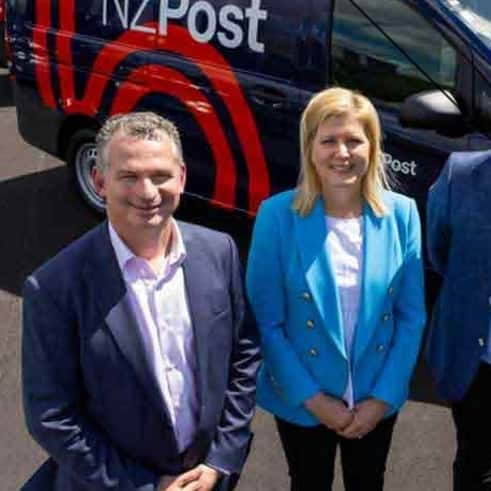NZ's Climate Change Commission expects $300 billion of capital expenditures to be required to adapt to climate change by 2050. This sounds like a long way away, but it's not. Our ability to meet these commitments means we need to build the right infrastructure between banks, capital, and business.
But 69% of New Zealanders believe businesses need to do more to reduce their environmental impact (Kantar Better Futures Report 2023). So with the looming ESG compliance task facing NZ businesses, we’ve asked a number of business experts from around New Zealand to give us their views.
Three defining areas in a changing global environment
Kate Wilson-Butler from Chapman Tripp shared her key macro-trends that will impact NZ businesses, directly or indirectly, through supply chain requirements and evolving market expectations.
- More countries (an estimated 60% of global GDP) have mandatory climate disclosure requirements in force or are being adopted soon. These countries represent the destination of over 80% of New Zealand exports by value. If we fail to comply, these global market expectations from international customers will impact the demand for New Zealand products and services.
- Major global companies are setting their own requirements, for example, Tesco, Aldi, Danone and Nestlé are increasingly ambitious when it comes to ESG targets. They will increasingly look to their supply chain to help them meet their goals. New Zealand suppliers of major international customers will need to prove their sustainability credentials measure up.
- Key New Zealand trading partners like the European Union (EU) are introducing new climate-related regulations affecting imports, like the Carbon Border Adjustment Mechanism (CBAM). New Zealand’s trading relationships, particularly our newer Free Trade Agreements with the European Union and United Kingdom, have enforceable climate and sustainability provisions. Breach of those could ultimately result in trade sanctions. While remote, it indicates of a new willingness to integrate climate and sustainability into international trade rules.
A good example of a Kiwi business making inroads to prioritising their ESG goals is Fullers360, the transport company based in Auckland. Mike Horne their CEO, is aiming to convert their fleet to be 100% electric or hydrogen by 2040. To make this a reality, they’re launching a nine metre fully electric hydro foiling vessel later this year – the first electric passenger vessel to operate in Auckland. The ferry operator is also delivering a suite of hybrid-electric vessels by 2025 with capacity for 200-300 passengers on behalf of Auckland Transport.
ASB's Clean Tech Fund
ASB’s Clean Tech fund was recently launched to support early-stage companies to reach their goals of reducing carbon emissions and support the transition of New Zealand to a low emissions economy. “The Clean Tech Fund is an example of how we looked at adapting our credit settings to support the energy transition,” James Paterson from ASB says. “In order to build out that infrastructure we need to collaborate and work together to design business models and capital allocation. A Boston Consulting Group report finds $30 billion is needed to decarbonise by 2030 and this is a real business opportunity. This is a prime opportunity for our customers too”.
Day to day impacts
Kate from Chapman Tripp acknowledges that while it’s important to understand how the world and regulation expectations are changing, it’s more important to understand the impact on our day-to-day jobs. “An ESG accountability loop is emerging from changing the stakeholder environment,” says Kate. “We live in an age of increased transparency on sustainability, whether required by law (such as through climate-related disclosures) or voluntary action. This prompts greater scrutiny and increased expectation regarding ESG performance and what good looks like. In turn, this lifts the benchmark of market practice and leads to greater accountability, which we see play out, for example, in climate litigation which is on the rise.”
Two leaders changing how they do business which will flow down to their customers include:
- Brendan King, Group General Manager of TR Group, knows road transport is vital to New Zealand’s economy, but creates about 21% of the nation’s greenhouse gas emissions. TR Group now have 50 electric trucks in service, plus one hydrogen Fuel Cell truck, and another 21 on order.
- Ryan McDonald, Head of New Business with Hiringa Energy, has launched three green hydrogen refuelling stations, designed to fill up to 60 trucks per day. They’re currently refuelling NZ Posts fuel cell-powered truck and trailer units in under 15 minutes. Another 24 stations across Aotearoa are planned.
The role of sustainability
The term ‘sustainability’ should fit inside each of the ESG requirements, as if our actions are not ongoing and supported, nothing will gel. Mike Bennetts, a leadership coach and author has a good analogy: ESG is a form of scoreboard and sustainability is how we play the game. Rachel Brown, CEO of the Sustainable Business Network agrees. “ESG is a useful measuring stick,” she says, “while sustainability includes how you look after people, customers and your role in decarbonisation”. ASB’s Jonathan Oram adds, “sustainability allows us to tell a story in a much simpler way, one that is more future-focused and aligns with strategy”.
Saying ‘we’re sustainable’ and then practising what you preach can be two different things however. The Warehouse Group, with a supply chain based in China, India and Bangladesh, has demonstrated their commitment to sourcing sustainable products. Chief Product Officer at The Warehouse Group, Tania Benyon, has a four step process:
- Establish an ethical sourcing programme. Go to the factories you’re buying from and see what is happening to understand their sustainability commitment fully. Create a sustainability framework your suppliers must comply with, followed by help to correct and improve.
- Actively educate suppliers on sustainability, including onsite training and e-learning.
- Take a product sustainability perspective by reducing the harm and waste in production, and considering how an item’s life can be extended.
- Make sustainability part of your DNA so it’s on everyone, not just a few. It serves as a reminder that gives approval for individuals and teams to make decisions that are right for customers and the planet.
The Red Shed started their ethical sourcing program 20 years ago. It’s always possible to begin.
Tracking the source
Emma Rowe, the Sustainability Specialist at FMG, starts us off with an example from our agriculture industry, where consumers increasingly want to track the food journey from the farm to their plate. “Remaining sustainable in agriculture is non-negotiable as our livelihoods depend on it.” She sees first-hand how farmers respond to changing demands and climate through improving existing farm practices and collaborating between industry and government. “Our role in supporting that evolution, beyond insurance, is providing the relevant insights, experience, tools and data. Delivering beyond your product or service, reinvesting in your community, and being purpose-led while making a profit, is the definition of sustainability.”
The last word
James from ASB says “the challenge for business is how to leverage regulation for market access to attract capital and engage consumers, rather than treat it as more compliance or a cost.”
Next steps
- For more information about how ASB can help finance your sustainability strategy, check out the ASB Clean Tech Fund.
- Learn more about how Tadpole strengthens businesses and leads the way forward through strategy and engagement, underpinned by science.
- NZTE offers several sustainability initiatives if you’re exporting, such as certification programmes, a Climate Action Toolbox, market insights on sustainability overseas and support for NZTE customers through their Sustainability Advisory team.
- The Sustainable Business Network can help with case studies, resources, a climate action plan and a directory of sustainable suppliers.
- The Sustainable Business Council is a membership organisation connecting businesses, partners, and sectors.
- Aotearoa Circle has a variety of reports and resources available for different industries.



